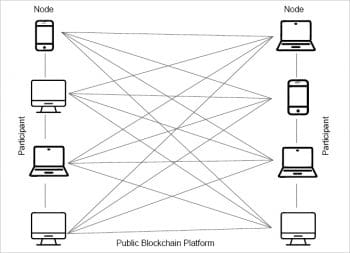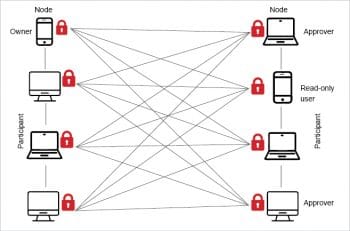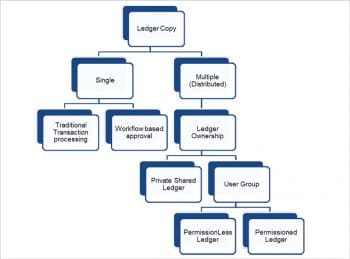The blockchain platform is most popular in transaction handling and workflow related use cases, across industries. This is due to it being decentralised and the immutable nature of its transaction records stored in the ledger. Based on usability and access level architecture, blockchain platforms are classified as either public or private. This article explains the basics of public and private blockchains. It also compares the permissioned and permissionless ledgers in these platforms.
The blockchain platform is popular due to its decentralised nature and how secure the transactions on it are. There are many blockchain platforms like Ethereum and Hyperledger, to name a few, that are popular. Since most of these platforms use cryptocurrency, transaction processing is very fast compared to that in traditional banks due to the nature of its connected network.
With this background, one has to decide which blockchain platform is suitable for a particular transaction, when defining a blockchain based solution. A blockchain platform can be public or private.
Public blockchain platforms like Bitcoin or Ethereum have a network architecture whereby anyone can participate and access the data in the network. They are permissionless blockchain platforms that anyone can read, write or even participate in. The data in a public blockchain platform is highly secure. It cannot be tampered with or changed once it is validated in the blockchain and is, at the same time, decentralised in nature so no one person can control the transaction easily.
Public blockchain architecture
In a public blockchain, participants can be even anonymous to the external world (but remain as registered users internal to the network) and they can access, change or validate the data in the transaction processing of the network, as shown in Figure 1.

When you are looking for a blockchain platform, which can handle open, immutable transactions and a distributed ledger, you can choose a public blockchain like Ethereum or Bitcoin. Even when the public blockchain is an open network, it remains decentralised, and assures transparent and secure transaction processing in the network.
Private blockchain
A private blockchain is a permissioned blockchain platform in which a workflow is followed, on who can participate and approve the transactions. It is more highly secured than a public blockchain platform due to its secure nature. HyperLedger, Ripple or Corda are some examples of private blockchain platforms.
In a private blockchain network, a group of owners handles user permissions for the network like viewers, participants, approvers and administrators. A workflow of validation and approval is followed to ensure no unethical transaction happens in the network. When you are looking for a blockchain platform for faster transactions and a scalable architecture, you can choose a private one.
As shown in Figure 2, in a private blockchain, we have designated roles like network owner, read-only user, approver and other participants, and the owner has the rights to grant or revoke roles to the participants, as needed. Hence, this kind of blockchain is used for enterprise solutions in domains like retail or for inventory management platforms, to handle a series of processes through a workflow mechanism.

A public blockchain platform is based on a permissionless ledger transaction, where the platform and ledger is open and shared with the public and can be accessed by anyone. Security is ensured in a permissionless ledger by handling distributed ledger transactions. The ledger copy is distributed across the network as multiple copies, and hence tampering with or correcting of ledger entries requires corrections in all the ledger copies in the network.
In a permissionless ledger, users can log in anonymously without revealing their identity and the transaction rate can be controlled through a defined owner group. On the other hand, a permissioned ledger has defined roles like the owner, approver, viewer/reader and administrator. These roles define workflow activities, and the control on transaction processing is ensured in such blockchain platforms with these user roles. There may be more than one user for each role so that the speed of the transaction is faster compared to permissionless ledgers.

Security implementation in public and private blockchains
Some popular public blockchain platforms are Ethereum, ZCash, Dash and Litecoin. They have security features incorporated to ensure transactions are safe and the user experience is smooth. They also offer additional benefits like a lower infrastructure cost to run and maintain the decentralised application in the platform.
Some popular private blockchain platforms are R3, Corda and Bitcoin. They have a secured architecture working in a controlled execution platform and, at the same time, ensure reduced transactional costs and data redundancy by reducing semi-manual compliance mechanisms and simplifying document handling activities in transaction processing.
Table 1 helps you understand various factors that affect the blockchain platform in terms of security and architectural needs.
| Table 1: Factors affecting public and private blockchain platforms | |||
| Factors | Purpose | Public blockchain platform | Private blockchain platform |
| Confidentiality | Limits the entities participating in a transaction | Low | High |
| Throughput | Number of transactions processed end-to-end for a given time period | Low | High |
| Anonymity of users |
Closed user group for accessing the transaction | Low | High |
| Finality | Time to wait to guarantee transaction is not orphaned (irreversible) | Low (Lottery based algorithm to select a node for transaction) | High (Voting based consensus algorithm to select node for transaction) |
| Access to platform |
Getting entry to the platform either anonymously or based on invitation from members | High (Anyone can access) | Low (Invitation based access) |
Comparing the performance of public and private blockchains
A public blockchain is slower compared to a private blockchain, which is lightweight and provides higher throughput in transaction processing. Various factors decide the performance of public and private blockchain platforms, as listed below.
Consensus algorithm: This is the step that decides the block to be finalised for a transaction. A public blockchain uses a lottery based algorithm and hence is slower in deciding a block. A private blockchain uses a voting based algorithm where the majority votes decide whether the block is to be finalised and hence is faster in deciding a block for transaction.
Credibility: Public blockchain platforms are trustless. The participants in the platform network may not trust each other as they work anonymously. On the other side, the private blockchain is a closed set of users and hence the credibility of the authorised nodes is high.
Collision of transaction: In a private blockchain, since the work group is known to each other, it is less likely to have a collision of transactions as the block of transaction handling is clearly defined for each user in the network. On the other hand, a public blockchain is an open-ended network and there are many collisions of transactions possible as multiple users try to attack a transaction, as no one in the network knows who validates the transaction.
Though the blockchain is widely used for money related transactions, there are many proven use cases across different industries like retail (for stock checking and order management), in manufacturing (for goods movement and processing), and in healthcare (for patient database management) to name a few. With this in mind, it is always important to understand the merits and demerits of both public and private blockchains prior to deciding which one is more suitable for an industry-specific use case.
Since the decentralised nature of the blockchain and its security are of key concern in implementing a blockchain based platform, it is important for an enterprise architect to choose one of the open or closed blockchain platform solutions or even a hybrid platform where some implementation (or workflow) is open and some implementation (or workflow) is closed. A hybrid blockchain platform sometimes makes the platform more flexible to adapt to either the private blockchain or public blockchain paradigm.









































































